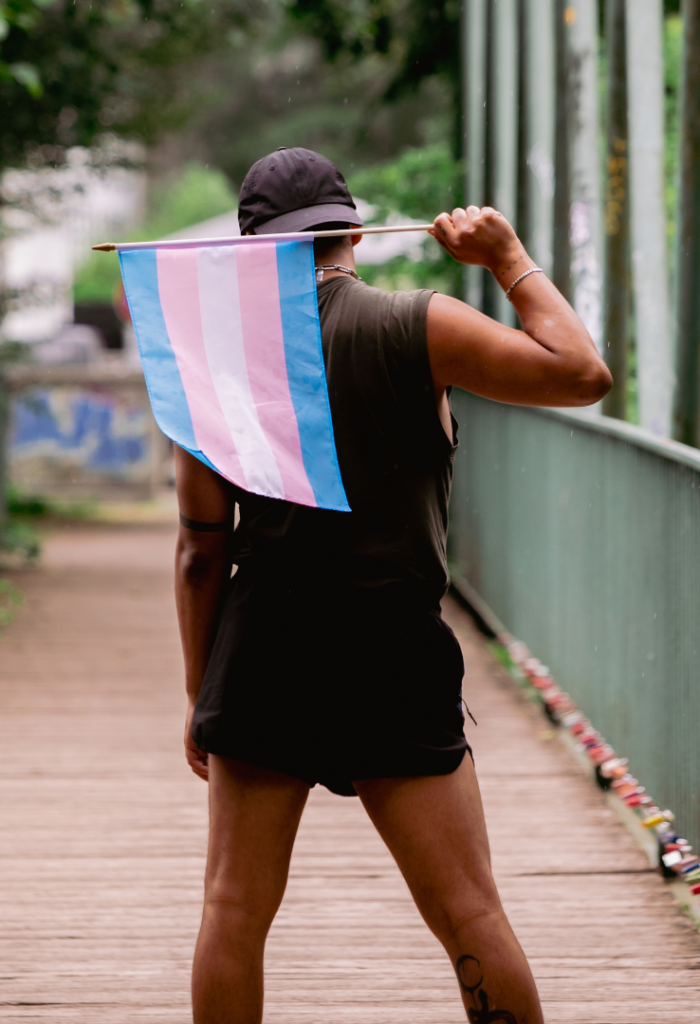Clinical Corner
by Dr. Vikram Shankar
Yesterday I was presented with an all too typical patient: A 16-year-old female with a plan and intent to hang herself. I went into the room and in my typical manner, introduced myself, confirmed the patient’s name, and then explained my role as treating physician. I could tell this patient was sad and guarded. I asked, “Are your pronouns she/hers?” The patient wept and quietly said, “No. It’s they/them.” I could tell this was a challenge for the patient to say. I was not expecting this response based on my assumptions about the patient’s physical appearance. But they were handing me a puzzle piece to their suffering.

Gender-Nonconforming and Indigenous
There’s no doubt that Indigenous gender-nonconforming people represent a vulnerable population within an already vulnerable population. The statistics are heartbreaking. Teen suicide rates in our communities are four times the national average. But it’s not just teens. Last week, an 11-year-old hanged themselves. The statistics are equally disturbing for transgender youth more broadly. A 2018 study published in the American Academy of Pediatrics found that 50.8% of female-to-male adolescents had attempted suicide compared to 14% of the general adolescent population (N = 120,617 adolescents; ages 11–19 years). (1)
The term “Two-Spirit” is a modern term created in 1990. It’s used by some Native Americans as an umbrella term for people who fulfill a “third gender” role within the traditions of their culture. (2) This term is not universally accepted and has been criticized for its erasure of traditional communities’ historic terminology, as well as for its implication of a “Western” binary view of gender. (3) However, overall it has received more acceptance than previous terminology.
The challenges gender-nonconforming people face persist even in the healthcare setting.(4) Research suggests that transgender and gender-nonconforming people experience more discrimination in healthcare than in any other setting—including employment and housing. (5) Transgender patients are at substantially higher risk for refusal of care, harassment, and violence within the healthcare setting, and the odds of discrimination are increased among lower socioeconomic groups. One national survey (N = 6,450) assessing transgender discrimination in healthcare found that 28% of respondents postponed medical care due to fear of discrimination. (6) Another study found that transgender patients may not disclose their gender identity, fearing that disclosure could compromise their medical care or have a negative impact on their care in the future. (7)

Transgender Patients: Opening the Door to Disclosure
As an emergency physician I’ve become more mindful to ask patients—particularly suicidal patients—about their pronouns. It is part of the introduction process, giving them an opportunity to convey information that might be fundamental to their care, but otherwise overlooked by ED staff. In the last year I’ve had five suicidal patients disclose their nonconfoming-gender identity to me, and report that it’s the first time they had disclosed this to anyone in a healthcare setting.
We see suicidal patients every day, and that’s (unfortunately) not surprising. What is surprising and concerning is that in all five instances this identity had not been realized by prior health staff or behavioral health providers. This lack of information persisted despite a long history of healthcare visits and numerous suicide attempts with the deep scars to prove it. It’s troubling because I suspect we—myself included—are not asking the right questions.
So what are the right questions? I discussed this with Dr. James R. Lehman, author of The Equal Curriculum: The Student and Educator Guide to LGBT Health (8) who provided some recommendations. One is, “What are your pronouns?” Or perhaps, “We ask everybody: What are your current pronouns?” Sometimes we may try to confirm what we see by saying, “Are your pronouns he/him/his?” If the word “pronoun” is a problem, maybe we ask: “How would you like to be addressed?” Whatever you might choose from this list, it’s a start. With most patients, you’ll just move on to the next question. But sometimes this question will lead to disclosure. Tell the patient you respect this and convey the information to the treatment team as appropriate.

Closing the Transgender Healthcare Knowledge Gap
Unfortunately, there appears to be a knowledge gap on the part of healthcare providers toward gender-nonconforming patients. The previously mentioned survey found that 50% of respondents had to educate their healthcare provider on basic information related to transgender patients. (9) As a useful reference tool for providers, The World Professional Association for Transgender Health (WPATH) is an organization that publishes Standards of Care for the Health of Transsexual, Transgender, and Gender Nonconforming People. These standards establish guidelines for numerous medical issues related to this population, including hormone therapy, surgery, reproductive health, and primary care.
While these specific medical subjects may not be salient to the ED provider on a daily basis, the overall wellbeing and mental health of any gender-nonconforming patient is. I believe that by learning about the transgender population and their healthcare needs, we can better serve our patient population overall.
Knowing this one piece of information—whether my patient is transgender—is vital to their survival in certain contexts, especially the healthcare setting. Personally, I’ve found that a little validation goes a long way. That’s extremely encouraging. It’s not about politics. It’s about recognizing the patient’s sense of self—as fragile as it may be—at the moment you meet them. Validating the patient’s whole self, especially in an at-risk situation, is vital for the provider-patient therapeutic relationship.
I hope that the next time you encounter a patient in crisis, you will think of this article, and ask the question that could save a life: “What are your pronouns?”

References
1 – Toomey RB, Syvertsen AK, Shramko M. Transgender Adolescent Suicide Behavior. Pediatrics. 2018 Oct;142(4):e20174218. doi: 10.1542/peds.2017-4218. Epub 2018 Sep 11. PMID: 30206149; PMCID: PMC6317573.
2 – Estrada, Gabriel (2011). “Two Spirits, Nádleeh, and LGBTQ2 Navajo Gaze”. American Indian Culture and Research Journal. 35 (4): 167–190.
3 – de Vries, Kylan Mattias (2009). “Berdache (Two-Spirit)”. In O’Brien, Jodi (ed.). Encyclopedia of gender and society. Los Angeles: SAGE. p. 64.
4 – Seelman KL, et al. Transgender Noninclusive Healthcare and Delaying Care Because of Fear: Connections to General Health and Mental Health Among Transgender Adults. Transgend Health. 2017;2(1):17-28.
5 – Xavier J, Honnold JA, Bradford J. The Health, Health-related Needs, and Lifecourse Experiences of Transgender Virginians. 2007.
6 – Grant J, Mottet L, Tanis J, et al. National Transgender Discrimination Survey Report on Health and Health Care. 2010.
7 – Sherman MD, Kauth MR, Shipherd JC, et al. Communication between VA providers and sexual and gender minority veterans: a pilot study. Psychol Serv. 2014;11:235–242.
8 – Lehman, J, Diaz K, et al. The Equal Curriculum: The Student and Educator Guide to LGBT Health. 2020.
9 – Grant J, Mottet L, Tanis J, et al. National Transgender Discrimination Survey Report on Health and Health Care. 2010

